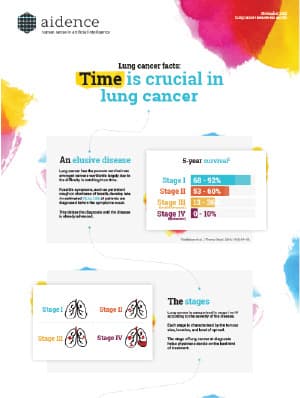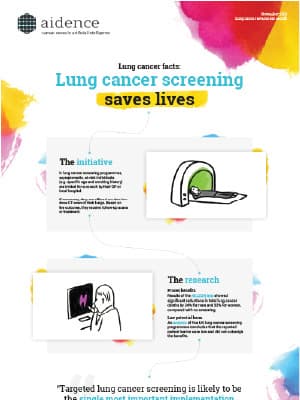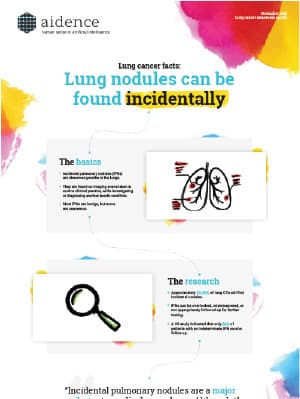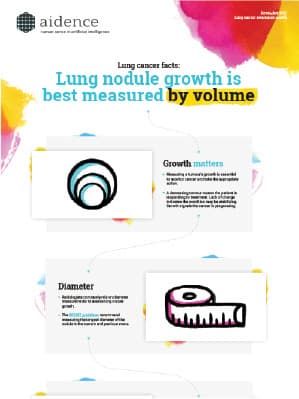
Early lung cancer detection with artificial intelligence:
A guide for patients
AI in the
patient journey
AI in medical imaging is the radiologists’ extra pair of eyes. It helps them manage their workload and make sure they don’t miss anything. The doctor always has the final say in your diagnosis, treatment, and next steps. This will not change anytime soon - AI is very, very far from replacing physicians.
Your journey as a patient stays the same. You will still see a radiographer when you come for a scan and your doctor to discuss the results once a radiologist has reported your scan. A radiologist using AI might have more time to focus on your case or explain the results than one who is not.
To get a better idea of how AI is helping radiologists, let’s have a look at what we do. Here is an example of how our AI-based solution, Veye Lung Nodules, is used to detect and manage possibly threatening pulmonary nodules:
Answers to your
questions
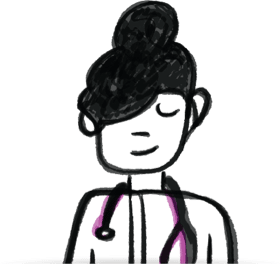
It may seem like AI is all about big data, but, actually, it can play an essential role in making medicine better tailored to your unique needs.
AI systems can compare your data with thousands or hundreds of thousands of other patients with similar illnesses. As a result, the system could predict, for example, the chance that you will develop a specific condition or how well you would respond to a particular treatment.
The doctor is always the one to make the final diagnosis or treatment decision based on the information on hand.
No data is used without your consent. When you visit a hospital for a scan, you will be informed of how your health data is used and asked for permission before proceeding.
At Aidence, we use the most advanced technical and organisational measures to protect the data we process. As such, we comply with the European Data Protection Legislation and with requirements set out in the ISO 27001, an international standard on managing information security. For more on how we process patient information, have a look at our data processing policy.
AI companies, like all medical companies, are under strict legal scrutiny by relevant authorities. In the EU, any devices that support physicians in diagnosing severe conditions must comply with EU legislation (Conformité Européenne or ‘CE’). In the US, medical devices must be approved by the Federal Drug Administration (FDA).
AI helps your doctor make better decisions and have more time to focus on the more complicated cases. AI is a new technology, and we are still learning and investigating its full impact on healthcare. We are regularly publishing new research into our products on this page.
By agreeing to share your health data for research and medical device development.




Useful resources
Need to screen
Lung cancer screening works and we need national programmes.
You too can help to make screening a reality. Use #NeedToScreen.
A campaign from Roy Castle Lung Cancer Foundation in the UK.
Get checked
Lung cancer has the highest death rate of all cancers in Europe. Why? Many people are not aware of the symptoms and risk factors associated with lung cancer. Learn about symptoms and risk factors.
An initiative of Lung Cancer Europe (LuCE).
See your doctor
Across England, current and past smokers ages 55-74 may be eligible for a lung health check. If you received an invitation from your GP, go for a free check – even if you feel fine.
You can find more info on the programme here.
Join a study
The French CASCADE study aims to demonstrate that chest CTs for lung screening can be read by a single trained radiologist, with AI. Women meeting eligibility criteria are invited for a low-dose scan.
Read the article.
Ask for help
Lung Cancer Netherlands stands up for everyone affected by lung cancer: the patient, as well as their family. Reach out and they will listen, support, and provide you with information and advice.
Get to know the organisation.
Aim high
Discover projects across more than 50 countries, aiming to increase screening and diagnosis, advance innovative medicine and improve the quality of care.
Join the movement.

